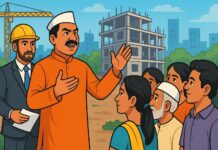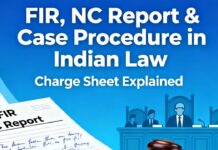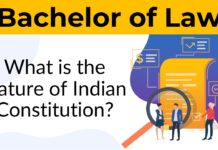11162
LL. B. (I Sem.) Examination, Dec. 2015
LAW-II Constitutional Law of India (Nature of the Constitutions & Fundamental Rights)
(K-1002)
Time : Three Hours] [Maximum Marks 100
Note Attempt questions from all Sections as per instructions.
Section-A
(Very Short Answer Questions)
Answer all the five questions. Each question carries 4 marks. Very short answer is required not exceeding 75 words. 4×5=20
1. What is need of constitutional law
2. Explain the term “equal protection of law”.
3. Who are socially and educationally Backward Classes ?
4. Explain the provisions of Article 15(5) of the Constitution.
5. How many freedoms have been provided by Article 19(1) ? 19(1) t ’14)
Section-B
(Short Answer Questions)
Answer any two questions out of the following three questions. Each question carries 10 marks. Short answer is required not exceeding 200 words. 10×2=20
6. What do you think is the form/nature of our constitution—federal, unitary or quasi-federal ? Critically examine the statement.
7. Explain and elucidate the meaning of the “Right to personal liberty”. Analyse critically the guidelines prescribed by the Supreme Court in this context.
8. Write a note on fundamental duties.
Section-C
(Detailed Answer Questions)
Answer any three questions out of the following five questions. Each question carries 20 marks. Answer is required in detail. 20×3=60
9. How does the Indian Constitution afford protection to the cultural and educational interest and rights of minorities ?
10. Article 13 makes the Judiciary, and especially the Apex court, as a guardian,. protector and the interpreter of the fundamental rights. Discuss.
11. What is the concept of fundamental rights ? Who can claim fundamental rights ?Against whom fundamental rights are available ? Explain.
12. “Directive principles are superior to fundamental rights.” Discuss in the light of emerging trend of Judiciary on the relationship between them .
13. “Equality is a dynamic concept with many aspects and dimensions and it can not be imprisoned within traditional limits.” Discuss with the help of judicial pronouncements.




















